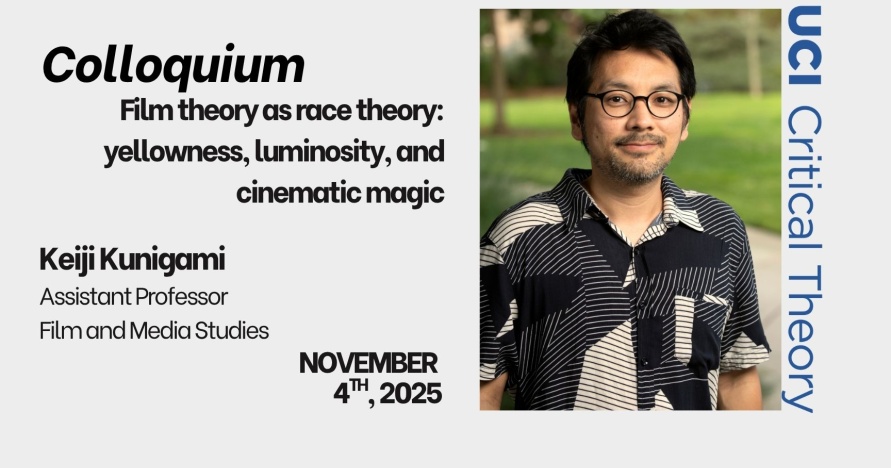
Please RSVP for this colloquium using this Google Form.
Message criticaltheory@uci.edu after RSVPing to receive a chapter from Professor Keiji to read prior to the meeting.
-
Film theory as race theory: yellowness, luminosity, and cinematic magic --
The talk will focus on the racial implications of the notion of “cinematic.” Considering the production of yellowness between the empire of Japan and post-slavery Brazil in the context of early twentieth racial capitalism, I will focus on how the racial work of film relied on the material modulation of luminosity, wherein to see better means to see less. For that, I will examine the racial underpinnings of the movement called Pure Film Movement (jun’eigageki undo), which used classical Hollywood as a model to modernize Japanese cinema and make it more profitable with the Western and Japanese colonial audiences, from the late 1910s through the 1920s, as expressed in one extant film from the movement and the film theory of one of the movement’s main names, the modernist writer Tanizaki Jun’ichirō. In the context of the Japanese film’s industry search for techniques to make Japanese cinema and bodies more cinematic, technologies such as make-up, montage, costuming, and lighting would be tasked with overcoming yellow abjection towards whiteness through cinematic form and visual tricks––or, as named by the critic Iwasaki Akira, cinematic magic. If, as Rizvana Bradley argues, Blackness carries an “intrinsically aporetic” relation to aesthetic form because it is produced “before” form, I argue that Tanizaki’s engagement with film theory reveals the cinematic regime of yellowness as mere form and technique, engendered within a racial capitalist logic rooted in anti-Blackness and produced for the white gaze. This talk is based on a part of my book manuscript Yellowness: Cinematic Regimes of Race Between Japan and Brazil.
Bio --
Keiji Kunigami is Assistant Professor of Film and Media Studies in the Department of Film and Media Studies at the University of California, Irvine. He researches and teaches Brazilian and Japanese cinemas, Asia-Latin American studies, race and visuality, and the theories of photography and film. His work has appeared in the journals Camera Obscura, Journal of Cinema and Media Studies, Journal of Latin American Cultural Studies, Verge: Studies in Global Asias, Galáxia, Logos, among other venues. He is currently finalizing his book Yellowness: Cinematic Regimes of Race between Japan and Brazil.
--
